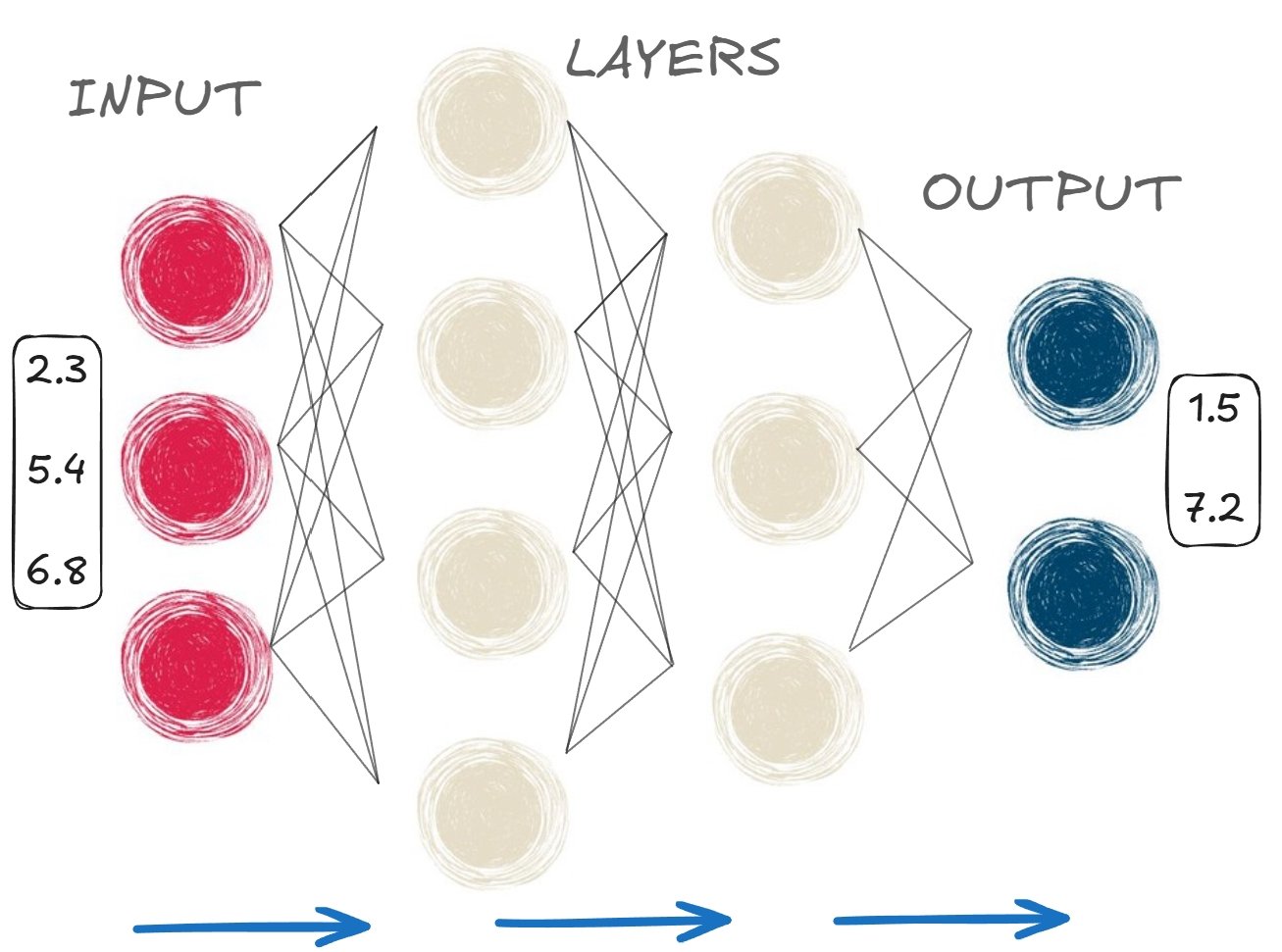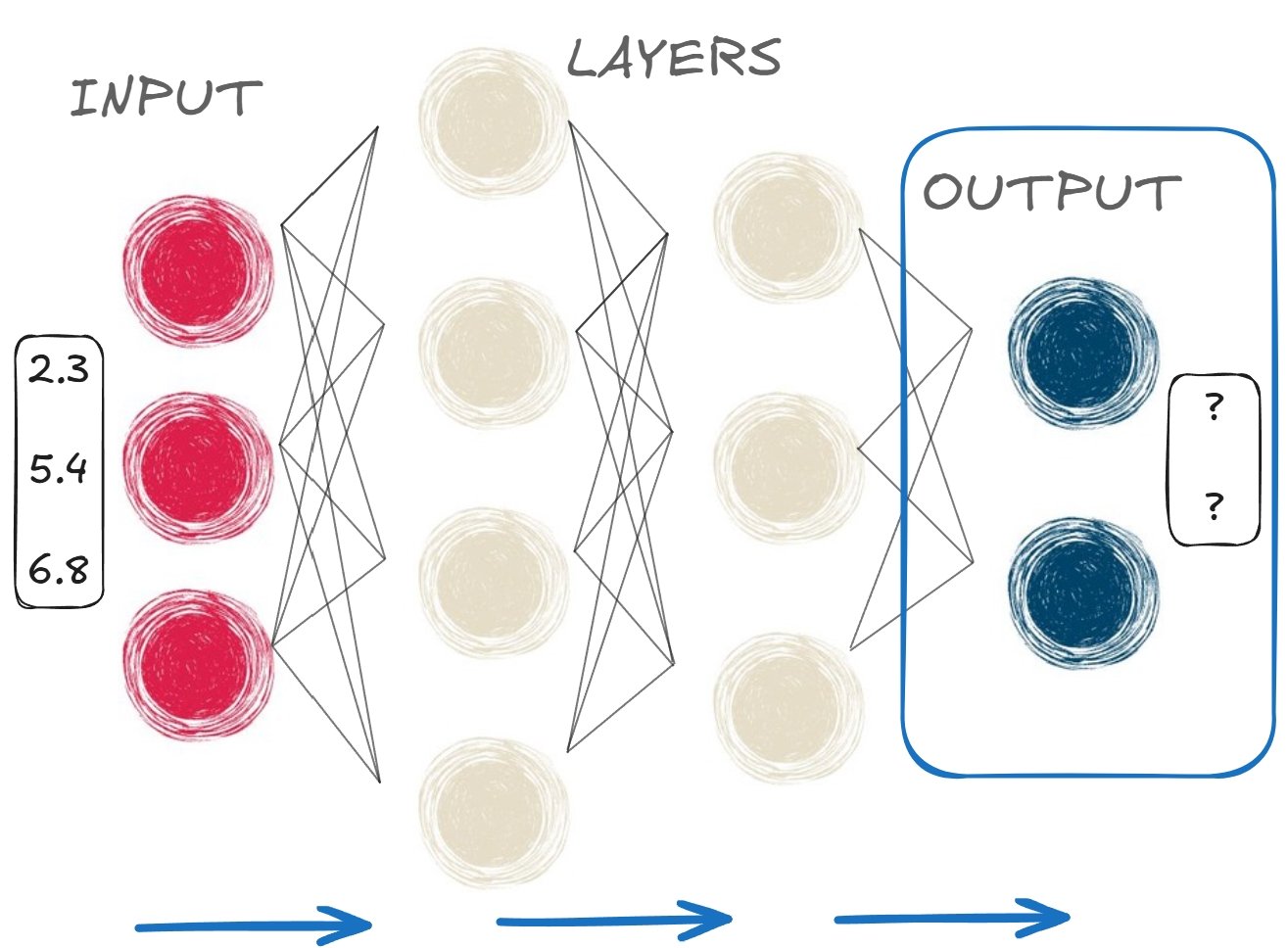Running a forward pass
Introduction to Deep Learning with PyTorch

Jasmin Ludolf
Senior Data Science Content Developer, DataCamp
What is a forward pass?
$$
- Input data flows through layers
- Calculations performed at each layer
- Final layer generates outputs
$$
- Outputs produced based on weights and biases
- Used for training and making predictions

What is a forward pass?
$$
Possible outputs:
- Binary classification
- Multi-class classification
- Regressions

Binary classification: forward pass

# Create binary classification model
model = nn.Sequential(
nn.Linear(6, 4), # First linear layer
nn.Linear(4, 1), # Second linear layer
nn.Sigmoid() # Sigmoid activation function
)
Binary classification: forward pass
# Pass input data through model
output = model(input_data)
print(output)
tensor([[0.5188], [0.3761], [0.5015], [0.3718], [0.4663]],
grad_fn=<SigmoidBackward0>)
Output: five probabilities between 0 and 1, one for each animal
Classification (0.5 threshold):
- Class = 1 (mammal) for values ≥ 0.5 (
0.5188,0.5015) - Class = 0 (not mammal) for values < 0.5 (
0.3761,0.3718,0.4633)
- Class = 1 (mammal) for values ≥ 0.5 (
Multi-class classification: forward pass
- Class 1 - mammal, class 2 - bird, class 3 - reptile
n_classes = 3# Create multi-class classification model model = nn.Sequential( nn.Linear(6, 4), # First linear layer nn.Linear(4, n_classes), # Second linear layernn.Softmax(dim=-1) # Softmax activation )# Pass input data through model output = model(input_data) print(output.shape)
torch.Size([5, 3])
Multi-class classification: forward pass

- Each row sums to one
- Predicted label = class with the highest probability
- Row 1 = class 1 (mammal), row 2 = class 1 (mammal), row 3 = class 3 (reptile)
Regression: forward pass
# Create regression model
model = nn.Sequential(
nn.Linear(6, 4), # First linear layer
nn.Linear(4, 1) # Second linear layer
)
# Pass input data through model
output = model(input_data)
# Return output
print(output)
tensor([[0.3818],
[0.0712],
[0.3376],
[0.0231],
[0.0757]],
grad_fn=<AddmmBackward0>)
Let's practice!
Introduction to Deep Learning with PyTorch

